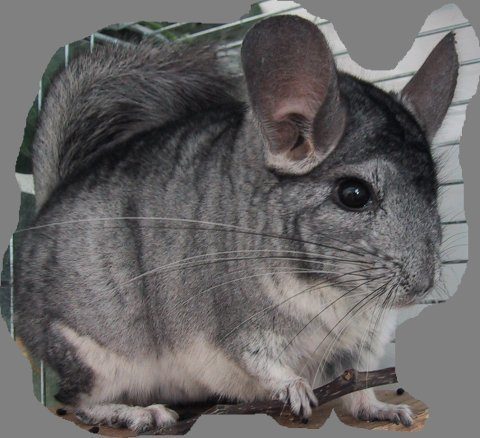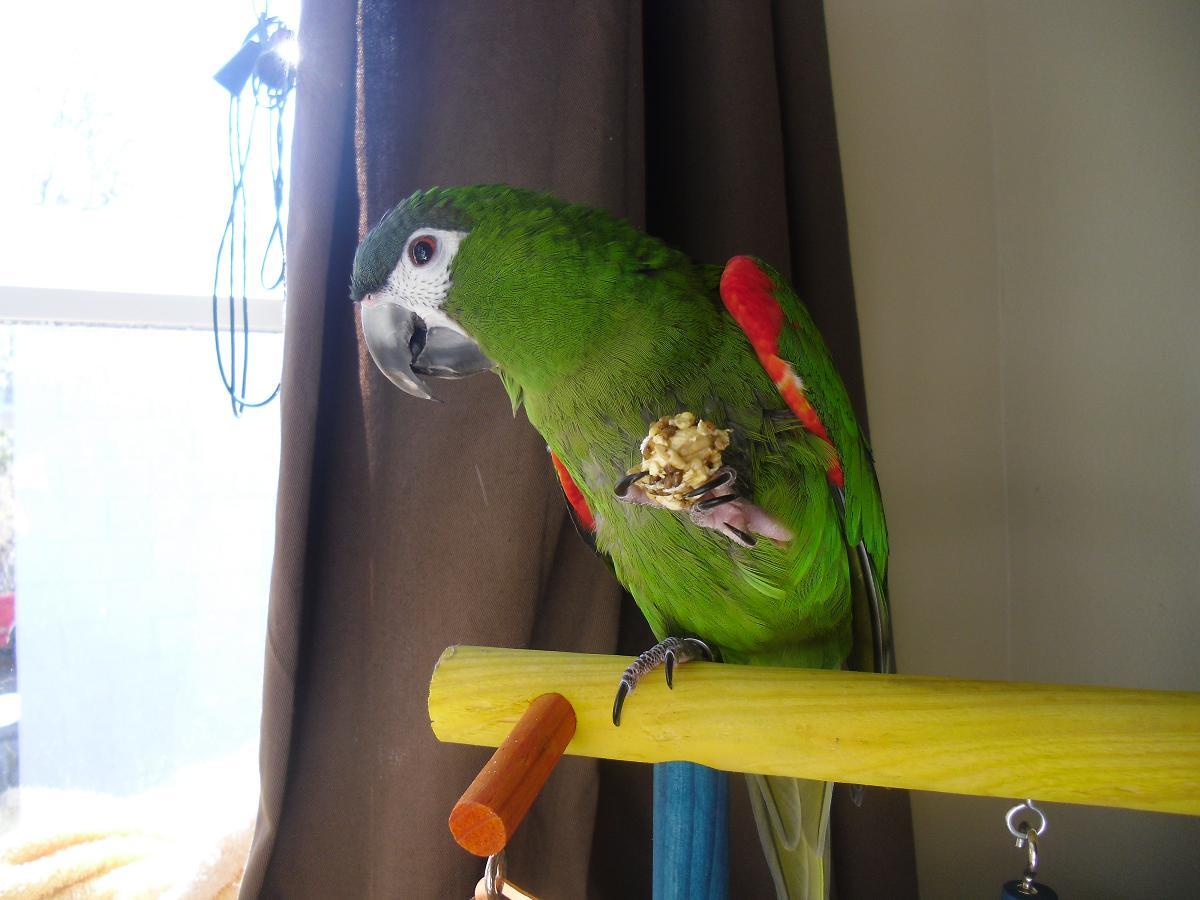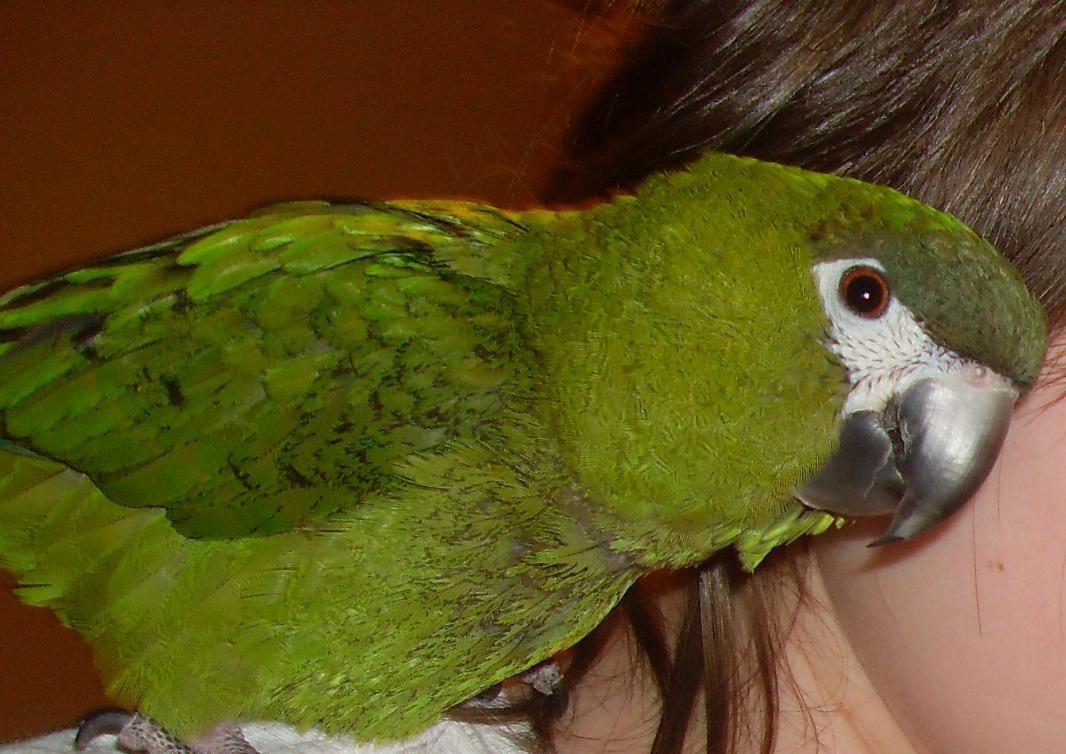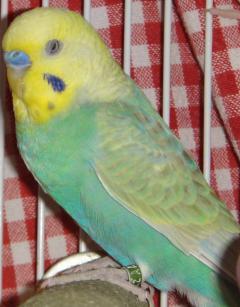Name: Chinchillas (Chinchilla lanigera <most commonly seen as pets> or Chinchilla chinchilla)
Experience Needed: Medium to high. Research is a must.
Life span: Average 15 years with 20 years not that uncommon.
Size: Roughly 20 inches (5-6 inches being tail). Males are normally a little smaller than the females (2 pound male compared to a 2.5 to 3 pound female).
Origin: Andes Mountain Range of South America.
Diet: In the wild the primary diet is grass, seeds, fruit, and insects. Captive chinchillas are fed a special diet of hay based pellets available at many pet stores. This can be supplemented with timothy hay. Alfalfa hay can also be used but in limited quantities due to potential liver problems. Dried fruit (raisins are a favorite) can be given as treats but should be offered no more than twice a day (5 raisins or one dried apricot = one treat). Fresh water should be available at all times. A rabbit style ball bottle works best. Metal or ceramic bowls are a must since chinchillas will chew up plastic. Wooden sticks made from birch, willow, apple, and kiln-dried pine used for hamsters, gerbils, and guinea pigs should also be available since chinchillas are a member of the rodent order and have constantly growing teeth. ANY CHANGES IN DIET, INCLUDING CHANGING BRANDS, NEEDS TO BE DONE GRADUALLY TO PREVENT INTESTINAL UPSET.
Temperament: Nocturnal in nature but will interact during daytime hours. Normally quite friendly and playful, especially when handled since birth, but can dislike being held and cuddled. Small children should not handle chinchillas unless closely supervised since chinchillas have sharp teeth and will bite if frightened or injured. Chinchillas like to leap and have been reported to jump up to 6ft in distance. If threatened when grabbed, they will "release" their fur, a defense mechanism developed to leave a predator with a mouthful of hair and not meat. Another defense tactic is urine spraying, usually with amazing accuracy up to 4ft. Personal experience shows that females are more likely to exhibit this behavior when babies are present.
Colors: Varies. Smoky grey is most common with black, black velvet, ebony, sapphire, white, fawn, brown, blue, and other colors available.
Environment and housing: Chinchillas prefer a various terrain. Since they jump, vertical height is needed with several landing areas. Cages are available that are designed especially for chinchillas. Tall ferret cages can also be modified for chinchilla use. Bars should be no more than 1 inch apart. Cages should be made of metal that is not coated with plastic and have solid bottoms. Their dense fur inhibits parasite infestation. The fur presents a bathing problem since the density does not allow water to evaporate quickly. Instead, they bathe in lava or pumice dust (also available at pet stores). Offer a bath two-three times a week to reduce mess caused by the rolling around. Large hamster style wheels, wooden toys on hemp fiber ropes, and non-plastic toys designed for guinea pigs are suitable. If females are to be bred, provide a "hidey hole" style box. Do not allow to roam free about the home since they do explore with their mouths and will eat telephone cords, furniture, etc. Can not be housebroken. Chinchillas tolerate cold temperatures with little difficulty but can overheat easily due to the fur density. Watch for the ears turning red for an indication they are overheating.
Family: Singles of either sex can be kept if one has the ability to spend some time interacting with them. Single sex pairs will get along if introduced while babies or juveniles. Occasionally older single sex pairs can be formed but watch for territorial disputes. Breeding pairs or colonies can also be formed but watch for territorial disputes when first forming the pairs/colonies. Gestation is 111 days. Twins are most common with singles being the next common and triples occurring considerably less frequent. When triplets are born, one is always smaller than the other two and will have to be watched closely for "failure to thrive" syndrome. Babies are born eyes opened, fully furred, and able to survive with minimal parental care.
Additional Notes: Pricing is normally dependent upon coloring and commonly starts around $100 USD. Since chinchillas have such dense fur, they have minimal dander shed, resulting in them being good pets for people who are allergic to pet dander. They look a bit like someone took a dwarf rabbit and stuck a squirrel tail on it.

Experience Needed: Medium to high. Research is a must.
Life span: Average 15 years with 20 years not that uncommon.
Size: Roughly 20 inches (5-6 inches being tail). Males are normally a little smaller than the females (2 pound male compared to a 2.5 to 3 pound female).
Origin: Andes Mountain Range of South America.
Diet: In the wild the primary diet is grass, seeds, fruit, and insects. Captive chinchillas are fed a special diet of hay based pellets available at many pet stores. This can be supplemented with timothy hay. Alfalfa hay can also be used but in limited quantities due to potential liver problems. Dried fruit (raisins are a favorite) can be given as treats but should be offered no more than twice a day (5 raisins or one dried apricot = one treat). Fresh water should be available at all times. A rabbit style ball bottle works best. Metal or ceramic bowls are a must since chinchillas will chew up plastic. Wooden sticks made from birch, willow, apple, and kiln-dried pine used for hamsters, gerbils, and guinea pigs should also be available since chinchillas are a member of the rodent order and have constantly growing teeth. ANY CHANGES IN DIET, INCLUDING CHANGING BRANDS, NEEDS TO BE DONE GRADUALLY TO PREVENT INTESTINAL UPSET.
Temperament: Nocturnal in nature but will interact during daytime hours. Normally quite friendly and playful, especially when handled since birth, but can dislike being held and cuddled. Small children should not handle chinchillas unless closely supervised since chinchillas have sharp teeth and will bite if frightened or injured. Chinchillas like to leap and have been reported to jump up to 6ft in distance. If threatened when grabbed, they will "release" their fur, a defense mechanism developed to leave a predator with a mouthful of hair and not meat. Another defense tactic is urine spraying, usually with amazing accuracy up to 4ft. Personal experience shows that females are more likely to exhibit this behavior when babies are present.
Colors: Varies. Smoky grey is most common with black, black velvet, ebony, sapphire, white, fawn, brown, blue, and other colors available.
Environment and housing: Chinchillas prefer a various terrain. Since they jump, vertical height is needed with several landing areas. Cages are available that are designed especially for chinchillas. Tall ferret cages can also be modified for chinchilla use. Bars should be no more than 1 inch apart. Cages should be made of metal that is not coated with plastic and have solid bottoms. Their dense fur inhibits parasite infestation. The fur presents a bathing problem since the density does not allow water to evaporate quickly. Instead, they bathe in lava or pumice dust (also available at pet stores). Offer a bath two-three times a week to reduce mess caused by the rolling around. Large hamster style wheels, wooden toys on hemp fiber ropes, and non-plastic toys designed for guinea pigs are suitable. If females are to be bred, provide a "hidey hole" style box. Do not allow to roam free about the home since they do explore with their mouths and will eat telephone cords, furniture, etc. Can not be housebroken. Chinchillas tolerate cold temperatures with little difficulty but can overheat easily due to the fur density. Watch for the ears turning red for an indication they are overheating.
Family: Singles of either sex can be kept if one has the ability to spend some time interacting with them. Single sex pairs will get along if introduced while babies or juveniles. Occasionally older single sex pairs can be formed but watch for territorial disputes. Breeding pairs or colonies can also be formed but watch for territorial disputes when first forming the pairs/colonies. Gestation is 111 days. Twins are most common with singles being the next common and triples occurring considerably less frequent. When triplets are born, one is always smaller than the other two and will have to be watched closely for "failure to thrive" syndrome. Babies are born eyes opened, fully furred, and able to survive with minimal parental care.
Additional Notes: Pricing is normally dependent upon coloring and commonly starts around $100 USD. Since chinchillas have such dense fur, they have minimal dander shed, resulting in them being good pets for people who are allergic to pet dander. They look a bit like someone took a dwarf rabbit and stuck a squirrel tail on it.

















